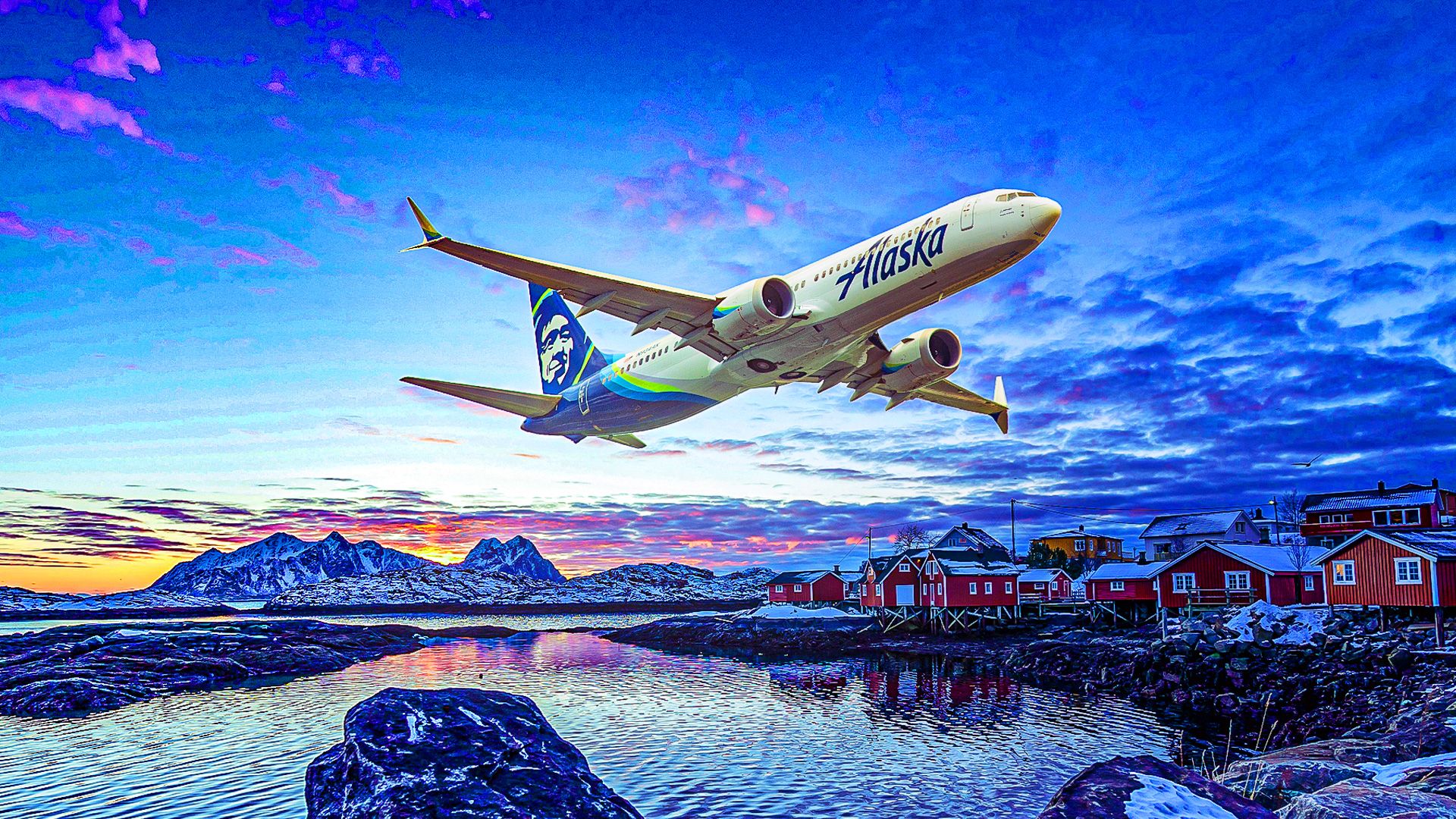World
Alaska Airlines Achieves Milestone Amid IT Challenges in 2025

Alaska Airlines has made headlines this week for significant developments in its operational landscape. The airline has successfully integrated with Hawaiian Airlines, receiving a Single Operating Certificate from the Federal Aviation Administration (FAA). This milestone underscores Alaska Airlines’ commitment to expanding its reach. However, the carrier is also facing challenges, with its third information technology outage in 2023, which has resulted in substantial financial losses.
The Fleet Composition of Alaska Airlines
As of 2025, Alaska Airlines predominantly operates the Boeing 737 family for its mainline services. The airline retired its last Airbus A320 series jets, formerly part of Virgin America, in October 2023. Currently, Alaska Airlines boasts a total of 244 mainline aircraft, of which 90 belong to the Boeing 737 MAX series. Among these, 10 are the MAX 8 variant, averaging just 0.9 years old, with an additional 10 units on order to enhance its fleet further.
The Boeing 737 MAX aircraft configurations vary, with options including 12 first class and 147 economy seats, or 16 first class and 145 economy seats. The airline’s fleet also includes 80 MAX 9s, each featuring 16 first class and 162 economy seats, and an order for 63 MAX 10s. CEO Ben Minicucci emphasized the financial stability of Alaska Airlines, stating in 2022, “We’re proud of the strong financial foundation that uniquely positions Alaska Airlines to make this commitment to our future.”
Legacy Aircraft and Regional Services
The older Boeing 737NG family remains vital to Alaska Airlines, with the 737-700 model still in operation. The airline has 11 of these aircraft, which typically seat 124 passengers across two classes, and it also operates three cargo-carrying variants. Alaska Airlines also manages 59 passenger 737-800 models, with an average age of 17.6 years. The configurations for these aircraft range from 12 to 16 first class and 145 to 150 economy seats.
The largest of the 737NG series in Alaska Airlines’ fleet is the 737-900ER, consisting of 79 aircraft with an average age of 9.8 years. These jets also feature a two-class configuration, accommodating 174 passengers and primarily serving routes along the West Coast of the United States.
Regional operations are managed by Horizon Air, a subsidiary of the Alaska Air Group. The airline exclusively operates the Embraer E175 regional twinjets, currently with 47 units in service. The average age of these aircraft is 5.5 years, and they are configured to carry 76 passengers, adhering to the scope clause for U.S. regional aviation.
Horizon Air’s E175s feature a three-abreast first class layout in a 2-1 configuration, providing comfortable seating with a width of 20 inches and a pitch of 37.8 inches. The economy section includes seats that are 18.2 inches wide, with 12 seats offering extra legroom.
As Alaska Airlines navigates its operational challenges and fleet enhancements, the airline remains committed to providing reliable service and expanding its footprint in the aviation market. The successful integration with Hawaiian Airlines marks a significant step forward, even as the airline addresses its recent IT issues.
-

 Science3 months ago
Science3 months agoToyoake City Proposes Daily Two-Hour Smartphone Use Limit
-

 Health4 months ago
Health4 months agoB.C. Review Reveals Urgent Need for Rare-Disease Drug Reforms
-

 Top Stories4 months ago
Top Stories4 months agoPedestrian Fatally Injured in Esquimalt Collision on August 14
-

 Technology3 months ago
Technology3 months agoDark Adventure Game “Bye Sweet Carole” Set for October Release
-

 World3 months ago
World3 months agoJimmy Lai’s Defense Challenges Charges Under National Security Law
-

 Lifestyle3 months ago
Lifestyle3 months agoVictoria’s Pop-Up Shop Shines Light on B.C.’s Wolf Cull
-

 Technology3 months ago
Technology3 months agoKonami Revives Iconic Metal Gear Solid Delta Ahead of Release
-

 Technology3 months ago
Technology3 months agoApple Expands Self-Service Repair Program to Canada
-

 Technology3 months ago
Technology3 months agoSnapmaker U1 Color 3D Printer Redefines Speed and Sustainability
-

 Technology3 months ago
Technology3 months agoAION Folding Knife: Redefining EDC Design with Premium Materials
-

 Technology3 months ago
Technology3 months agoSolve Today’s Wordle Challenge: Hints and Answer for August 19
-

 Business3 months ago
Business3 months agoGordon Murray Automotive Unveils S1 LM and Le Mans GTR at Monterey









